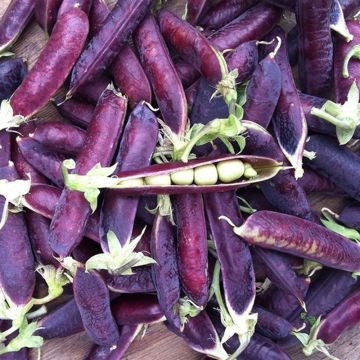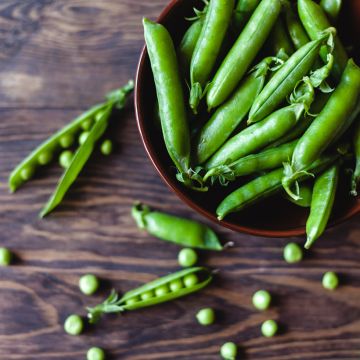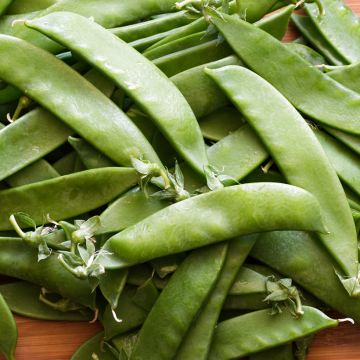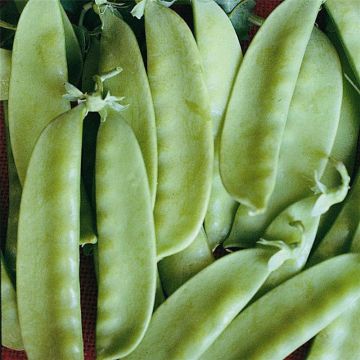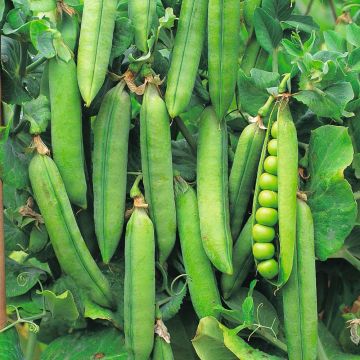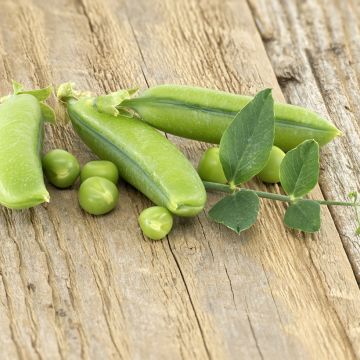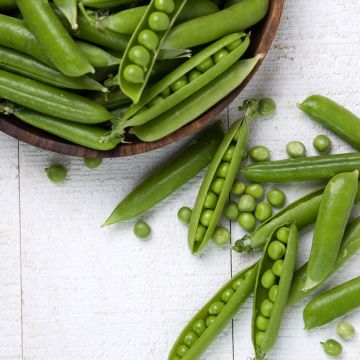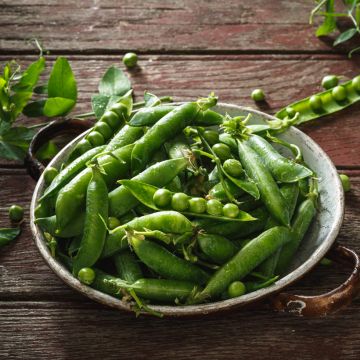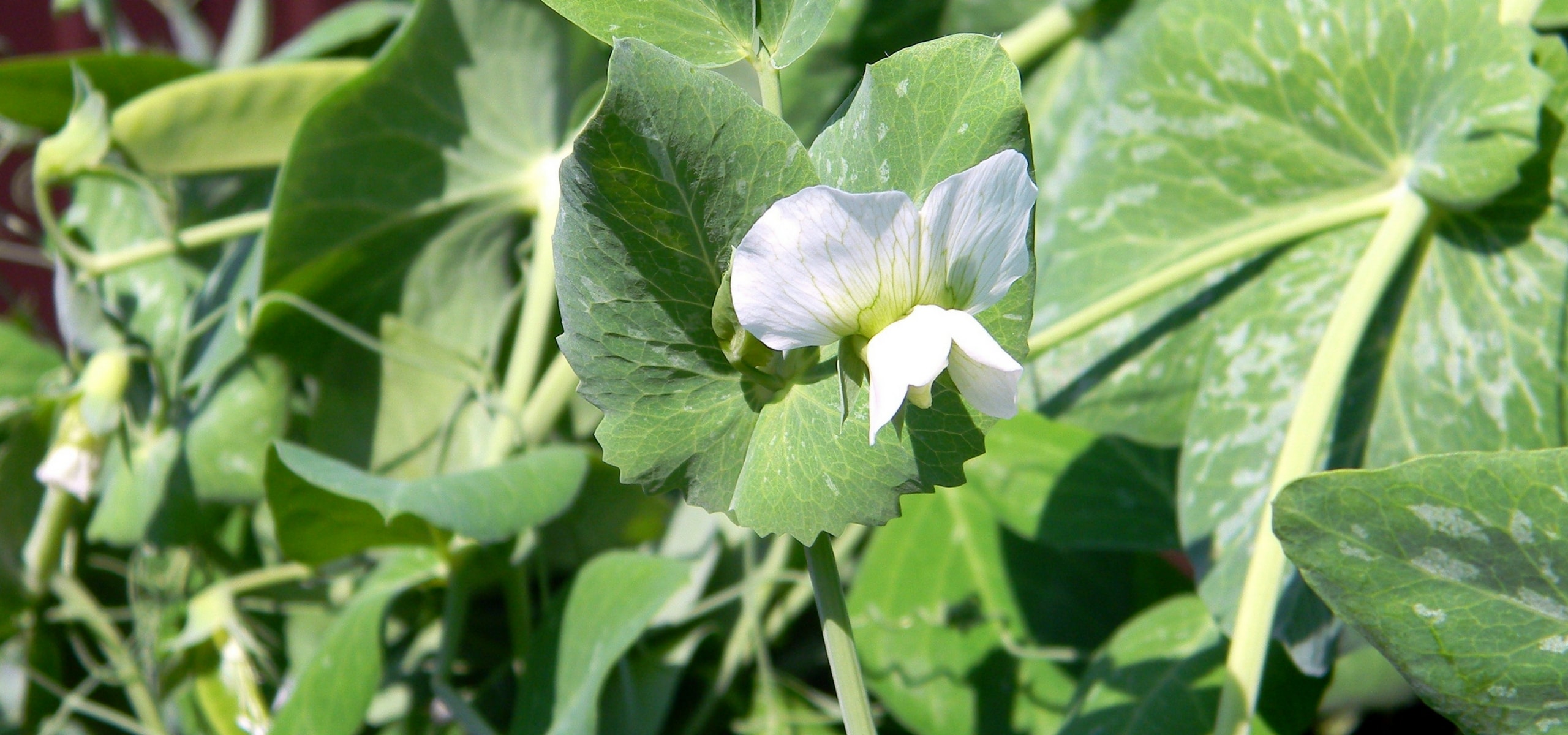
Succeeding in growing peas
Sowing, maintenance, harvest
Contents
The pea is easy to grow and can be sown in a vegetable garden or in a pot on a balcony. However, it is important to consider certain factors such as soil, watering, sowing distance, and support. Follow our tips to successfully sow peas and achieve beautiful harvests.
Which variety to choose?
Smooth-seeded peas (‘d’Annonay’ for example) are cold-resistant, but they do not appreciate heat. They are perfect for early sowing. In contrast, wrinkled peas (such as ‘Kelvedon Wonder’) tolerate it, but are not very hardy: they are better suited for late spring sowing. Choose your variety based on the desired sowing date.
Where to sow peas?
Peas thrive in mild and humid climates. They are not very demanding and do well in all soils, even ordinary ones, but their preference is for light, cool, and not overly calcareous soils. Like most vegetable plants, they need sunlight to bear fruit.
In the vegetable garden, peas make good companions, as they associate well with almost all vegetables. However, avoid planting them alongside leeks, garlic, onions, shallots, fennel, and other Fabaceae such as beans.
Discover other Peas
View all →Available in 1 sizes
Available in 1 sizes
Available in 1 sizes
Available in 1 sizes
Available in 1 sizes
Available in 1 sizes
Available in 1 sizes
Available in 1 sizes
Available in 1 sizes
Available in 1 sizes
How to care for them?
Peas do not require any special maintenance apart from regular hoeing and cultivating, which can be avoided if you mulch the soil.
The plants need support to climb, especially in windy conditions. For dwarf varieties, such as ‘Petit Provençal’, plant a few small ramified branches, and for pole or climbing varieties like ‘Serpette Guilloteaux’ or ‘Express à longue cosse’, provide stakes 1.5 to 2 metres high or trellis netting.
→ Discover our tutorial on how to build a pole variety teepee.
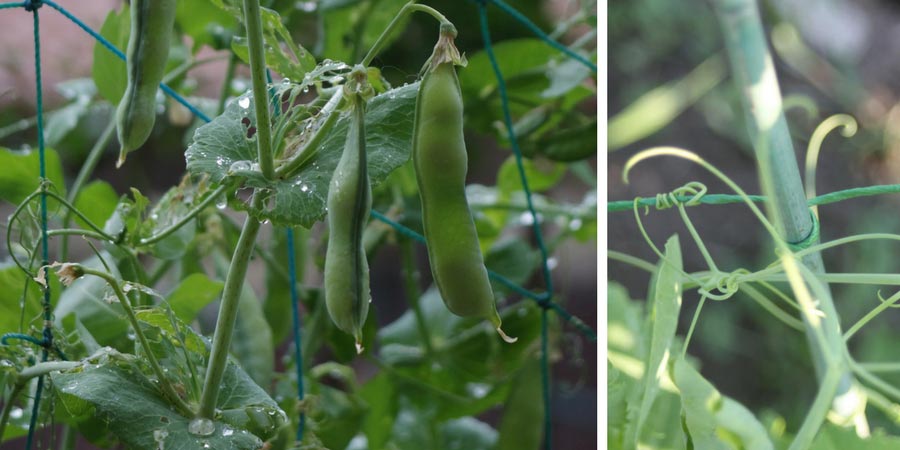
Peas climbing on a trellis netting
During their cultivation, peas are particularly sensitive to both lack and excess of water: do not let the soil dry out and water regularly, but without overdoing it until the pods form.
Read also
Support climbing varieties of vegetablesPests and potential diseases
Peas generally grow without any issues. However, among the possible pests, you will find:
- birds and slugs,
- green aphids, thrips, and pea moth.
To protect your young plants, install anti-insect nets and spread an organic slug deterrent such as Ferramol. Against green aphids and thrips, spray a solution of water mixed with black soap (20% dilution). Finally, to combat the pea moth, use Bacillus thuringiensis, this organic insecticidal is effective against caterpillars in general.
The most common disease is powdery mildew. This is a fungal disease that can be easily avoided by not watering the foliage and respecting planting distances.
Finally, to maximise your chances of success, choose particularly resistant varieties, such as ‘Telephone Pea’.
- Subscribe!
- Contents































